Coober Pedy: An Australian Town That Lives Underground | Amazing Images.
Coober Pedy is a small town in northern South Australia, 850 kilometers
north of Adelaide on the Stuart Highway. On the surface, the place
looks pretty deserted. A treeless plain on the edge of the Stuart
Ranges, with a few sparsely spaced houses, a couple of inns and
restaurants, a police station, a school and a hospital further north.
But that’s only half the town. The other half lives underground in
spacious caves and tunnels called “dugouts” where the town’s residents
have built homes, hotels, restaurants, bars, churches and more. Coober
Pedy was established in 1915 following the discovery of opal by a
14-year old boy who was camping with his father's gold prospecting
party. Within a few years hundreds of prospectors were tearing up the
turf. But people who flocked here to mine the previous stones soon
discovered life above ground was pretty tough. In the summer, the
temperature often exceeds 40 degrees Celsius. On these hot days, the
relative humidity rarely gets over 20%, and the skies usually remained
cloud-free.

One of the most famous signs of Coober Pedy. The town has around 250,000 mine shafts and signs like this warn visitors about the dangers of walking without looking. This sign is now reproduced in t-shirts, coffee mugs, flags, bags and plenty more things which you can buy as souvenirs. Photo credit
To escape the scorching daytime temperatures, the residents began to live underground. The early Coober Pedy houses were built in the holes that had already been dug in search for opal. Modern homes are dug into the hill sides and include all the amenities of an above-ground home including living rooms, kitchens, walk-in closets, bar and cellar. The entrance is usually at street level, and the rooms extend towards the back into the hill. All the rooms are ventilated with a vertical shaft, keeping the temperature regulated.
This ingenious style of living was introduced by soldiers returning from the First World War to prospect from opal mining. Coober Pedy was originally known as the Stuart Range Opal Field, named after John McDouall Stuart, who in 1858 was the first European explorer in the area. In 1920 it was re-named Coober Pedy, an anglicised version of Aboriginal words "kupa piti", which is assumed to mean "white man's hole".
Today Coober Pedy is the leading supplier of gem-quality opal, producing the bulk of the world's white opal. The town has over 70 opal fields and is the largest opal mining area in the world.
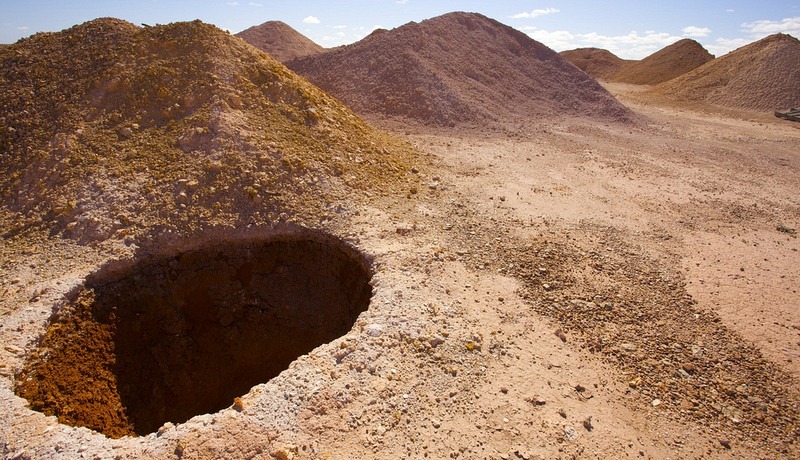
An open mine shaft. Photo credit

A mining truck on stilts welcomes tourist to Coober Pedy. Photo credit
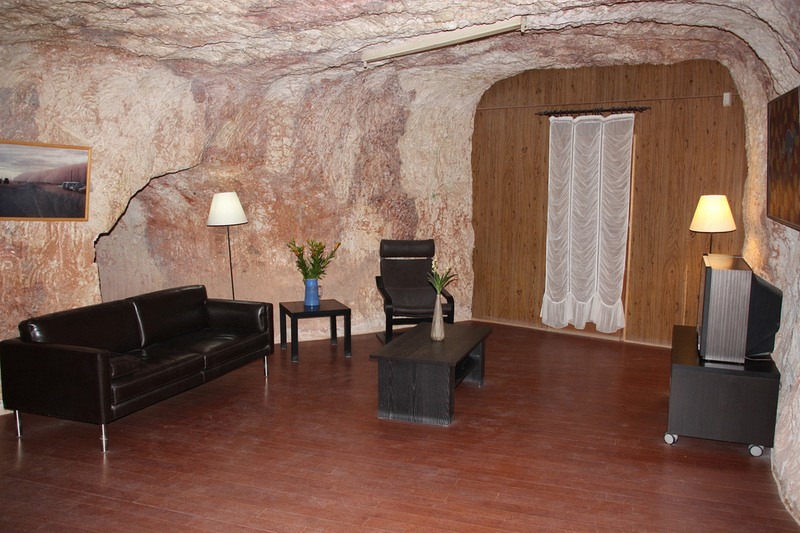
An underground living room. Photo credit

Photo credit

An underground bookstore. Photo credit

Entrance to an underground church. Photo credit
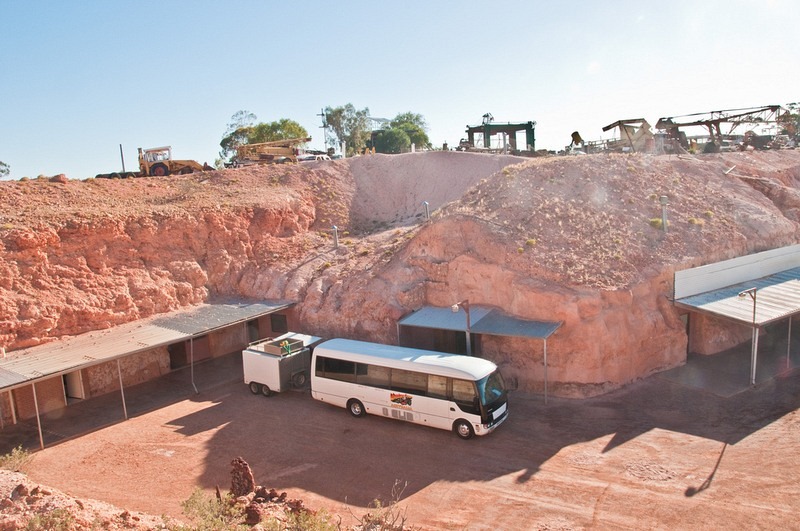
Photo credit

There is a local golf course - mostly played at night with glowing balls, to avoid daytime temperatures. It’s completely free of grass and golfers take a small piece of "turf" around to use for teeing off. The lack of grass hasn’t discouraged them to put up this sign in the golf course though. Photo credit
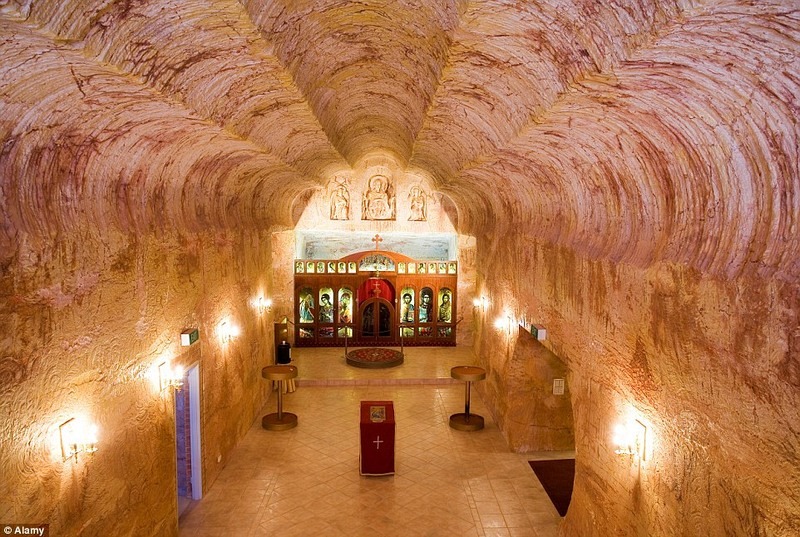
A major attraction of Coober Pedy is this church. Photo credit
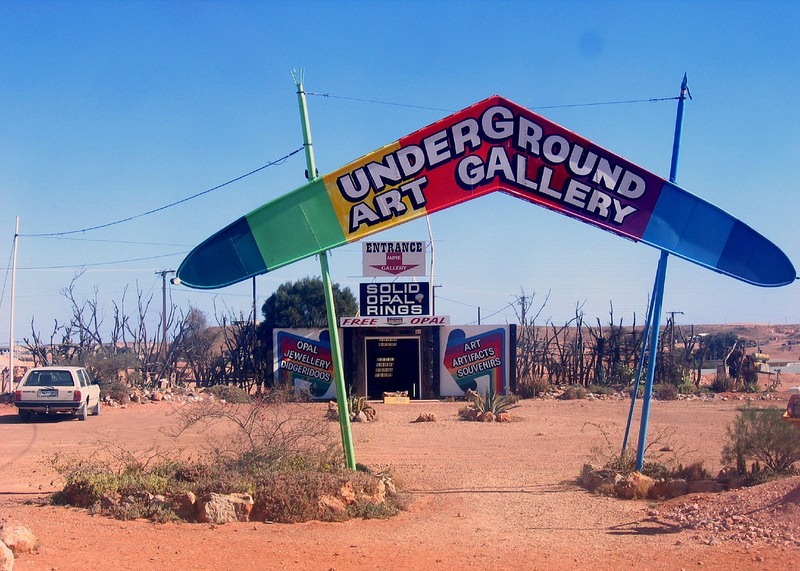
Photo credit

Photo credit

Desert Cave Hotel, Coober Pedy. Photo credit

Another hotel room. Photo credit
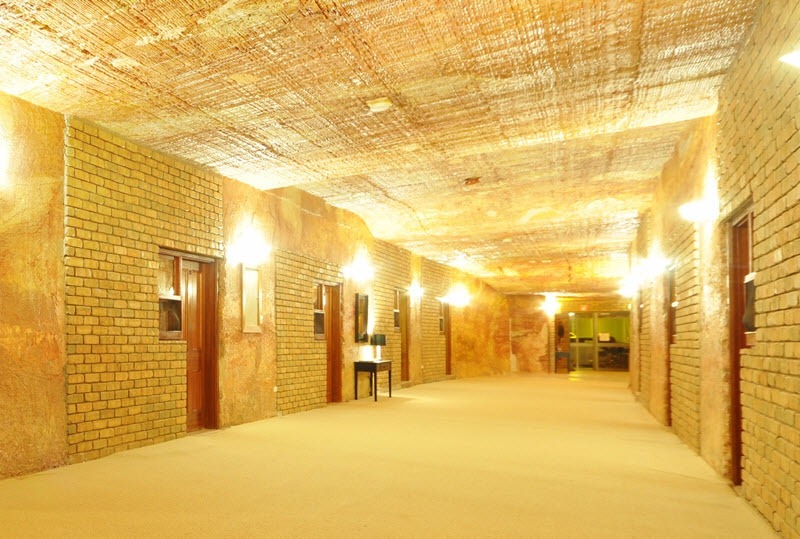
The Lookout Cave Underground hotel in Coober Pedy. Photo credit

Blower used for mining opal at Coober Pedy. Photo credit
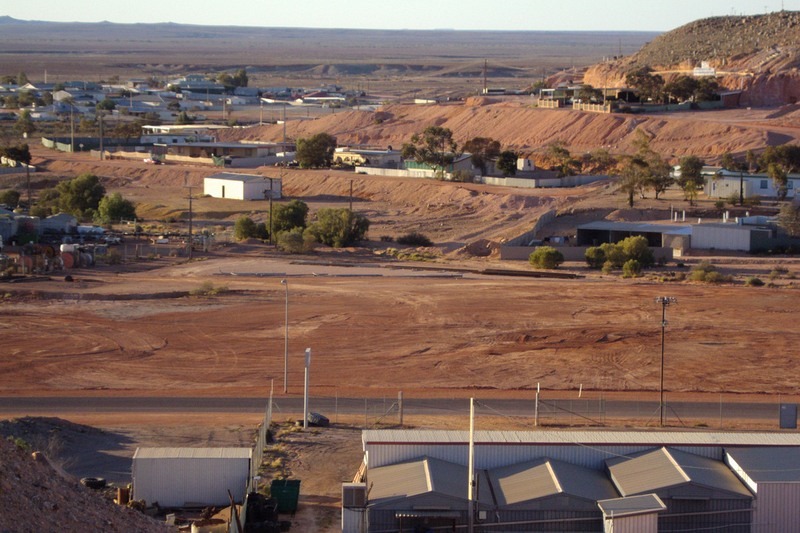
A general view of Coober Pedy. Photo credit
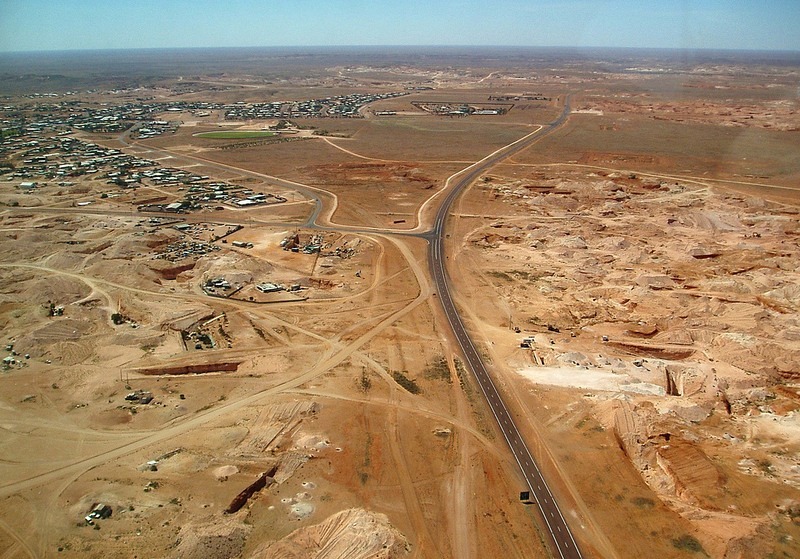
Aerial view of Coober Pedy. Photo credit
Sources: Outback Australia Travel Secrets / Opals Down Under / www.cooberpedy.sa.gov.au / Wikipedia

One of the most famous signs of Coober Pedy. The town has around 250,000 mine shafts and signs like this warn visitors about the dangers of walking without looking. This sign is now reproduced in t-shirts, coffee mugs, flags, bags and plenty more things which you can buy as souvenirs. Photo credit
To escape the scorching daytime temperatures, the residents began to live underground. The early Coober Pedy houses were built in the holes that had already been dug in search for opal. Modern homes are dug into the hill sides and include all the amenities of an above-ground home including living rooms, kitchens, walk-in closets, bar and cellar. The entrance is usually at street level, and the rooms extend towards the back into the hill. All the rooms are ventilated with a vertical shaft, keeping the temperature regulated.
This ingenious style of living was introduced by soldiers returning from the First World War to prospect from opal mining. Coober Pedy was originally known as the Stuart Range Opal Field, named after John McDouall Stuart, who in 1858 was the first European explorer in the area. In 1920 it was re-named Coober Pedy, an anglicised version of Aboriginal words "kupa piti", which is assumed to mean "white man's hole".
Today Coober Pedy is the leading supplier of gem-quality opal, producing the bulk of the world's white opal. The town has over 70 opal fields and is the largest opal mining area in the world.

An open mine shaft. Photo credit

A mining truck on stilts welcomes tourist to Coober Pedy. Photo credit

An underground living room. Photo credit

Photo credit

An underground bookstore. Photo credit

Entrance to an underground church. Photo credit

Photo credit

There is a local golf course - mostly played at night with glowing balls, to avoid daytime temperatures. It’s completely free of grass and golfers take a small piece of "turf" around to use for teeing off. The lack of grass hasn’t discouraged them to put up this sign in the golf course though. Photo credit

A major attraction of Coober Pedy is this church. Photo credit

Photo credit

Photo credit

Desert Cave Hotel, Coober Pedy. Photo credit

Another hotel room. Photo credit

The Lookout Cave Underground hotel in Coober Pedy. Photo credit

Blower used for mining opal at Coober Pedy. Photo credit

A general view of Coober Pedy. Photo credit

Aerial view of Coober Pedy. Photo credit
Sources: Outback Australia Travel Secrets / Opals Down Under / www.cooberpedy.sa.gov.au / Wikipedia